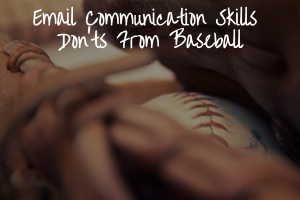Effective email communication is crucial to the success of your business. Check out these helpful how-to tips.
Originally published 4/19/12 and written by Brad Grant. This blog has been updated for freshness.
The amount of information we process daily is almost mind-numbing. Podcasts, Netflix, the internet, texting, and social media all compete for our attention.
Email has replaced the telephone as the preferred mode of business communication. Business leaders must, therefore, be able to effectively utilize email communication to be successful.
Approximately 3 million emails per second are sent, which adds up to almost 100 trillion emails per year. Combine that with the fact that 50% of all emails are misunderstood and, needless to say, separating the email "wheat" from the "chaff" is a challenge.
9 Tips for Creating Effective Email Communication
So how do business leaders create effective email communication? Suggestions abound. We'll address those we believe work best. Once you've determined that you should communicate via email (rather than by telephone), we recommend that you remember to:
-
Identify your business purpose. What do you hope to accomplish? Do you have a clear business reason for the email? If you do not STOP! Figure out what your reason is for sending the email. And your email should mean business.
-
Be clear, concise, and considerate. Clarity is key to getting your point across. So is brevity. The shorter, the better. Be professional, polite, and avoid the use of sarcasm. And DO NOT SHOUT!
-
Know your audience. Match your tone and degree of formality to that expected by your contacts. If you don't know what that is, never assume a level of familiarity you haven't yet established. Better to be too formal than not formal enough.
-
Be objective about the subject. Your subject line should identify exactly what you are writing about. Remember, your target's inbox is probably overflowing and he or she may take no more than a few seconds to decide whether to read your email or simply delete it. Tip? Write your subject line after you've written the body of the email.
-
If you need something from the reader (i.e., response or information), say so. Don't imply what you want; ask for it.
-
Be responsive/answer quickly.
-
Make sure you include the attachment you say you're sending and that it opens. But make sure it's necessary.
-
Review, edit and review again. And never react via email, only respond. There is a difference.
-
If your message is critical and you need for it to stand out and can't afford for it to be misinterpreted, effective email communication should use multimedia messaging that stimulates active engagement similar to face-to-face interaction. When you know your recipient has the time to view such a presentation, take advantage of the opportunity.






Leave a Comment